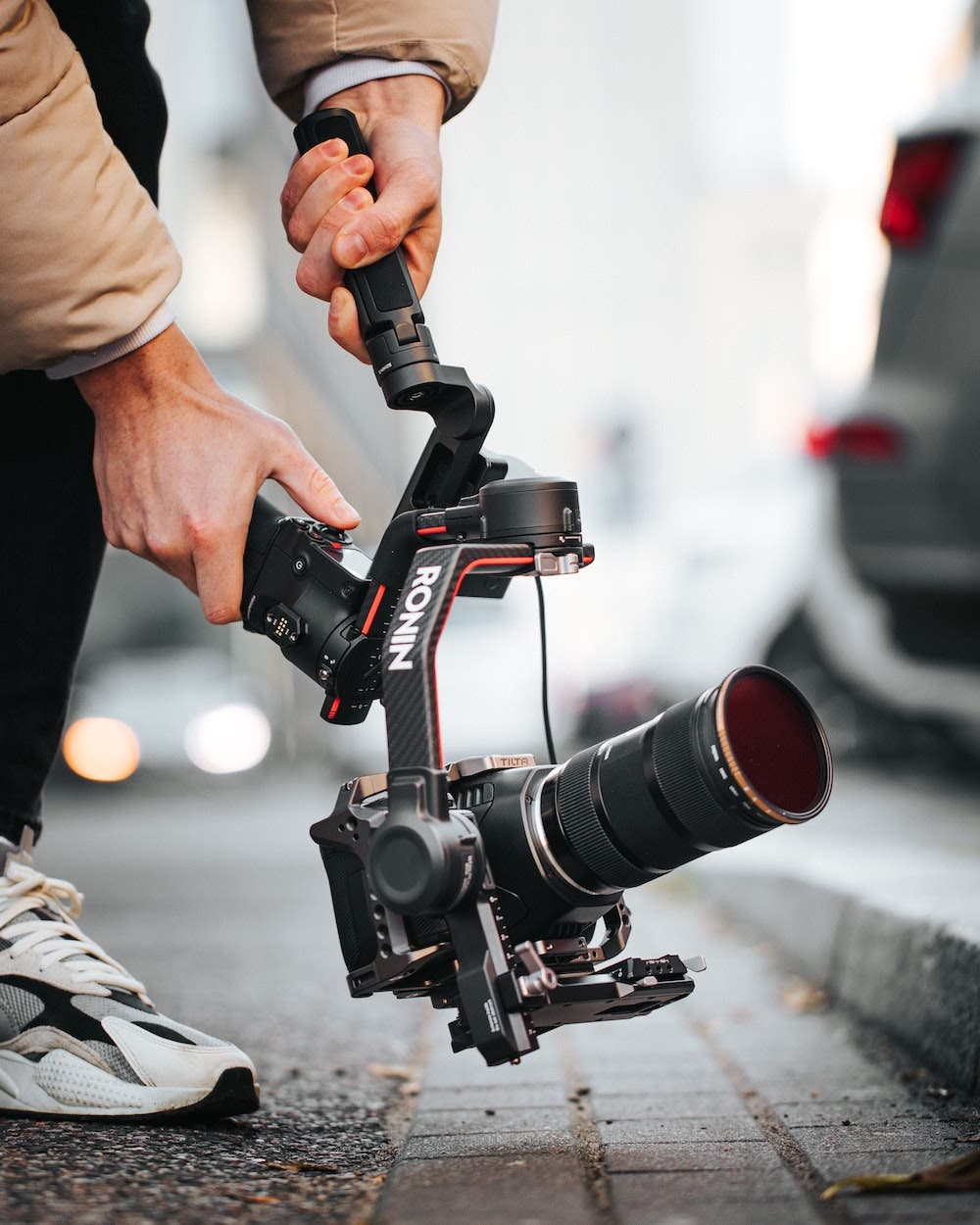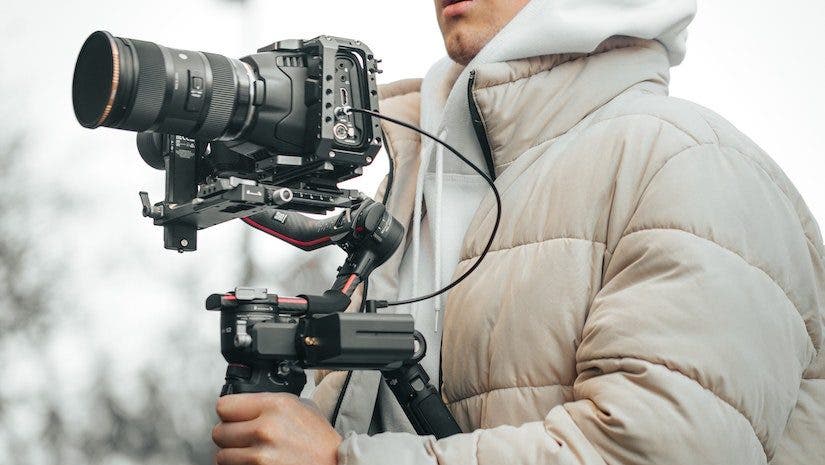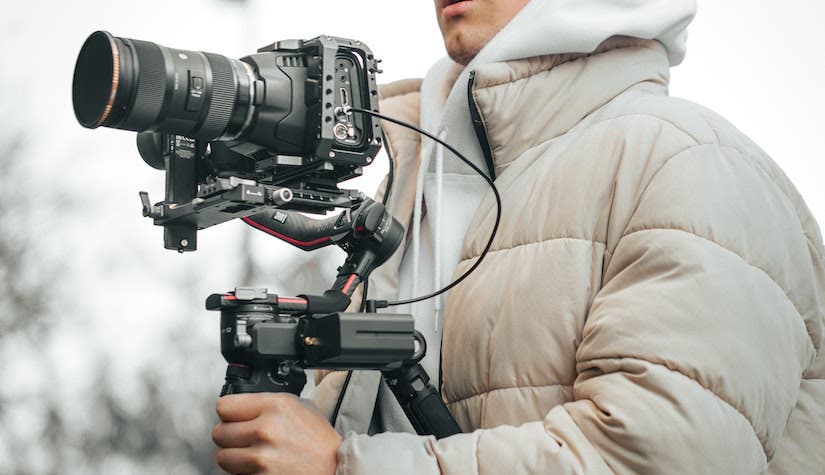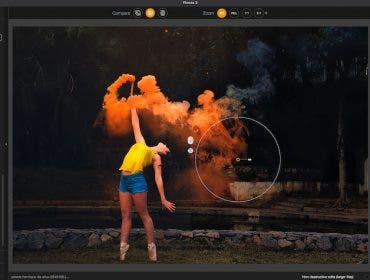Many photographers try videography to grow their area of expertise, create multimedia artworks, or expand their commercial range. Motion adds a temporal dimension to compositions and allows you to reveal additional objects to create a story that will keep the viewer engaged for longer. However, working with motion is challenging from a technical point of view. You have to move the camera smoothly and in a controlled manner. To create high-quality video, you want to eliminate shaky footage. Therefore, you want to make sure you have the right gear. But what kind of video stabilizer is right for you when considering a gimbal vs slider?
What is a Gimbal?
A gimbal is a device that allows the camera to rotate smoothly along an axis. It has sensors and motors to stabilize the camera and create fluid footage. Gimbals are handheld devices. It means it doesn’t take away the experience of filming with the camera in your hands. You still have the freedom to follow your subject and maneuver the camera as you like.
You can choose a 1-axis, 2-axis, or 3-axis gimbal. But if you want to tilt, pan, and roll using the same gimbal, you need a 3-axis gimbal such as Zhiyun CRANE-3S. You should also find out how much weight the gimbal can hold and its battery life.
Pros and Cons of Gimbals
Gimbals are versatile and allow you to follow a moving subject, changing the direction of shooting anytime. It increases image stability without reducing your freedom of expression. You can still use unusual angles and position the camera any way you like. Furthermore, gimbals provide a firm grip on your camera, which comes in handy when filming.
Gimbals may be more expensive and sensitive than other video stabilizers. Some videographers argue that it takes longer to set up a gimbal because of the balancing process you have to do manually. In addition, the balance is sensitive and may go off when you add new lenses or microphones.
Although people appreciate the freedom of movement gimbals provide — sometimes this advantage may be a drawback. A free movement is an imperfect movement because the operator does it. If you film products or other static subjects, you don’t want any imperfections in your filming. In addition, it takes your full attention to operate a camera and a gimbal. Remember, you need to control composition, exposure, focus, adjust the microphone, or change camera settings and movement simultaneously.

What is a Slider?
A slider is a device that allows the camera to move on a set of straight tracks. You can mount it on tripods or light stands and place it on a table or other flat surfaces. A slider can give you between 20 and 100 cm of travel to create a smooth and slow movement in the direction of your choice.
The longer the slider is, the heavier it becomes. Rhino ROV PRO every day has a 20.3cm length of travel and weighs only 450g. On the other hand, Came-TV 80cm Motorized Parallax Slider has an 80cm length of travel and weighs 1.85kg.
When you use a slider, you have at least one free hand to make adjustments. You have less freedom of motion but more stability and the possibility to take slow-motion shots. You can program some motorized sliders to go from Point A to B, and back to A again continuously, at specific speed settings, allowing you to control another camera simultaneously or talk to the camera in your own video while giving the appearance of another one operating the camera. This can level up the production value of interviews or when shooting video courses.
Pros and Cons of Sliders
Sliders provide precise but limited movements. They are easy to install and control and produce standard, commercial-looking videos. Sliders are also perfect for slow-motion shots and product videos. Especially for commercial videography, you want precision, clarity, smoothness, and not so much artistic versatility. With a motorized slider, you don’t need to record the same movement repeatedly, but nail it in the first take because of the precise movements of the slider. However, you have to be careful how fast you move the camera on the slider and how long. Slider shots can easily become dull and cliché-like.
When using a slider, you need a subject in the foreground to make the camera’s dynamism perceptible for the viewer. The slider focuses on the subject and tells the viewer where to look. It is also more effective when you have a static subject, and this reduces the slider’s versatility and makes it fit only in particular cases.
Price is one of the slider advantages of the slider. A slider can be inexpensive, especially if you choose the shorter ones. It’s also often lighter than a gimbal and therefore, it’s easier to carry one around. However, if you choose a long and heavy slider, you need two solid tripods to hold it or the option of putting it on the ground or on a table.
Gimbal vs Slider: How to Choose
The choice between a gimbal vs slider depends on the type of video you want to make, your shooting style, and the type of movements you need to capture.
A gimbal offers artistic freedom and makes your videos imperfectly unique. Your recordings will be similar to handmade products: no two will be alike. Gimbals work perfectly for art, conceptual movies, and vlogging style video.
Because it doesn’t need a place to mount it on, a gimbal is the preferred video stabilizer of outdoor videographers. It allows any angle of shooting and adapts to the environment. Sport and event videographers appreciate its flexibility and the possibility to follow subjects as they move or do something unexpected. You can change the direction of filming and keep up with the most unpredictable subject. When you have dynamic scenes and aim to react quickly, a gimbal is what you need.
On the other hand, a slider provides conservative movements and produces more similar compositions. It works very well for product and food footage, commercial videos, and real-estate shots, for which you want consistency among the videos. You could use a slider when you know the conditions in which you will be filming and the position of your subject. Focusing on a static subject in the foreground is the usual way to work with a slider. The movements are slower and more predictable than with a gimbal. Sliders are preferred for documentaries and studio films.

Concluding Words
Videography is a great way to improve your storytelling skills and work with dynamic compositions. It gives you a different perspective on space and helps you learn to predict your subject’s moves. As a photographer, you are used to freezing motion. As a videographer, you should learn to go along with it and give it a role in your composition. Both sliders and gimbals help avoid unwanted camera shake and record smooth and fluid movements. They improve the quality of your work and allow you to cut down your production time significantly.






